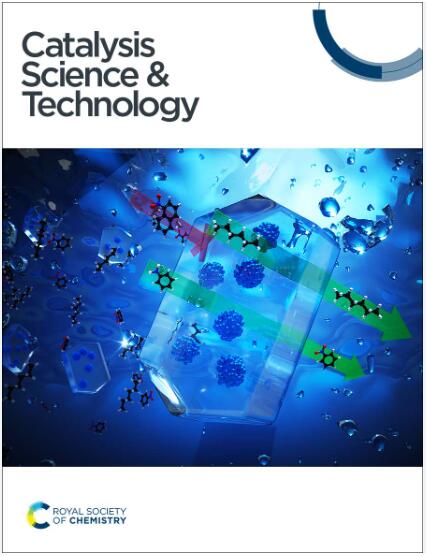Cu(i)-based metal–organic framework-derived core–shell composites for carbon dioxide conversion to oxazolidinones†
IF 4.4
3区 化学
Q2 CHEMISTRY, PHYSICAL
引用次数: 0
Abstract
Cu(i)-based catalysts have shown great potential for CO2 conversion, though Cu(i) instability remains a significant hurdle. One promising approach is the encapsulation of Cu(i)-based nanoparticles within MOFs. This strategy not only protects the nanoparticles but also facilitates the preconcentration of substrates (e.g., CO2) and intermediates through steric confinement effects, thereby enhancing the catalytic rate and selectivity. In this study, a surfactant-assisted self-assembly strategy was employed to fabricate a Cu2O@ZIF-8 composite with a high specific surface area (894.84 m3 g−1). The ZIF-8 shell functions as a microchemical reactor, protecting the internal Cu2O NPs while enabling localized CO2 enrichment and activation, enhancing substrate interactions, and facilitating efficient transport. This composite enabled a one-pot synthesis of oxazolidinones with yields exceeding 99%, along with excellent stability and recyclability. This work offers valuable insights into stabilizing Cu(i) and designing efficient MOF-based catalysts for CO2 conversion.
Cu(i)基金属-有机骨架衍生核壳复合材料用于二氧化碳转化为恶唑烷酮†
Cu(I)基催化剂显示出巨大的潜力,尽管Cu(I)的不稳定性仍然是一个重大障碍。一种很有前途的方法是在mof内封装Cu(I)基纳米颗粒。该策略不仅可以保护纳米颗粒,还可以通过空间限制效应促进底物(如CO2)和中间体的预富集,从而提高催化速率和选择性。在本研究中,采用表面活性剂辅助自组装策略制备了具有高比表面积(894.84 m3 g−1)的Cu2O@ZIF-8复合材料。ZIF-8外壳作为微化学反应器,保护内部的Cu2O NPs,同时实现局部CO2富集和活化,增强底物相互作用,促进高效运输。该复合材料可一锅合成恶唑烷酮,收率超过99%,具有良好的稳定性和可回收性。这项工作为稳定Cu(I)和设计高效的基于mof的CO2转化催化剂提供了有价值的见解。
本文章由计算机程序翻译,如有差异,请以英文原文为准。
求助全文
约1分钟内获得全文
求助全文
来源期刊

Catalysis Science & Technology
CHEMISTRY, PHYSICAL-
CiteScore
8.70
自引率
6.00%
发文量
587
审稿时长
1.5 months
期刊介绍:
A multidisciplinary journal focusing on cutting edge research across all fundamental science and technological aspects of catalysis.
Editor-in-chief: Bert Weckhuysen
Impact factor: 5.0
Time to first decision (peer reviewed only): 31 days
 求助内容:
求助内容: 应助结果提醒方式:
应助结果提醒方式:


